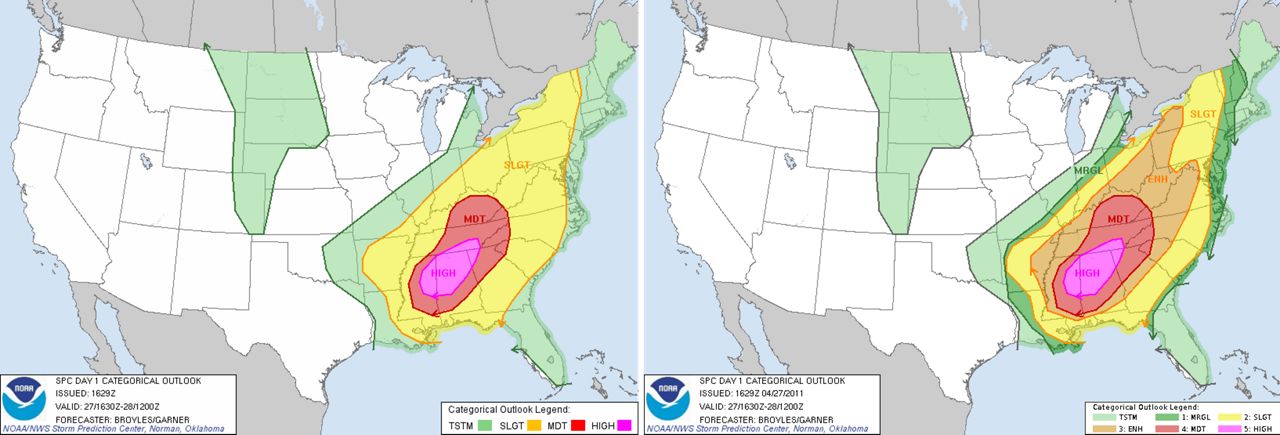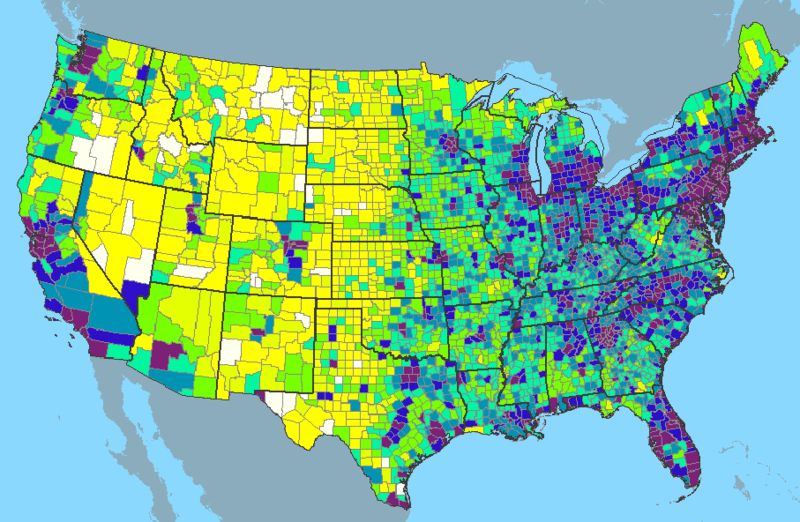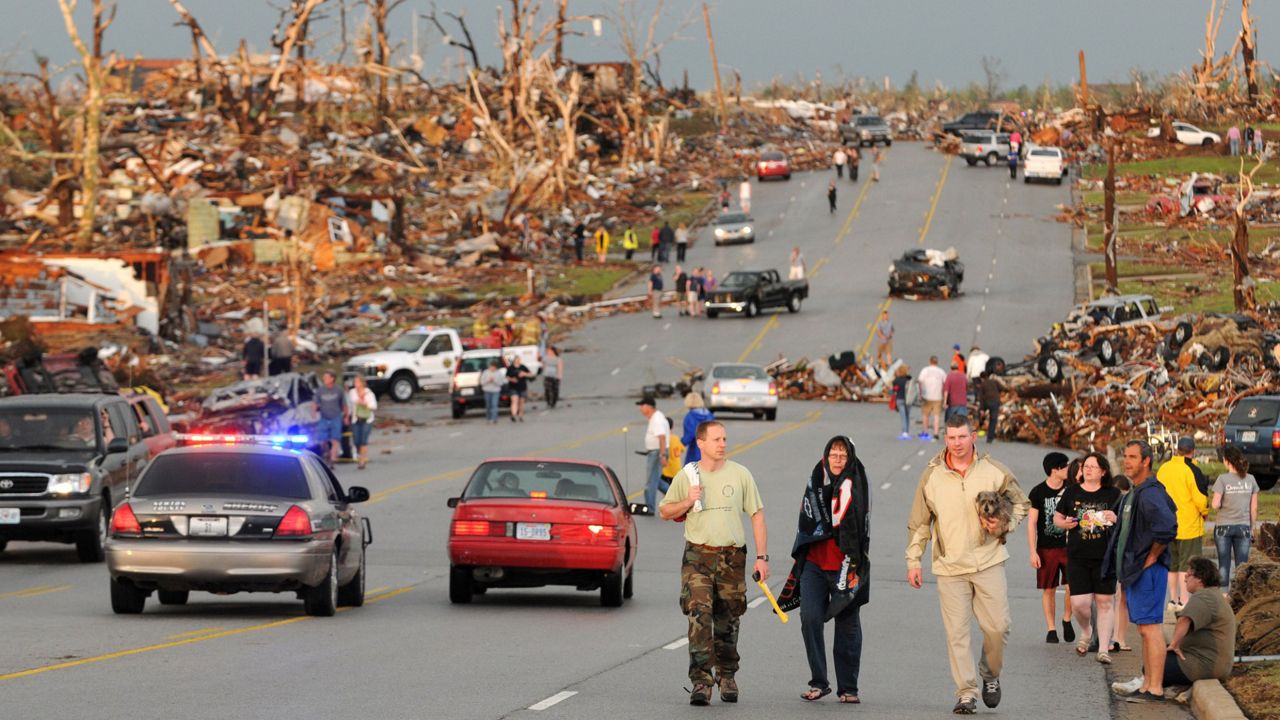Despite years of improving forecasts and better technology, 2011 was one of the deadliest and most destructive years on record for severe weather in the United States. It turns out, an accurate forecast doesn’t do much good if people don’t know what to do with it.
In 2011, Twitter was only five years old and TikTok was still five years away. The newest iPhone was the iPhone 4 and Samsung’s Galaxy line was just on its S2 model.
Social media usage went from half of adults in the U.S. to about three-quarters in the past 10 years, according to Pew Research. That’s allowed more of a two-way line of communication between meteorologists and the people who are under the threat of severe weather, including while they’re in shelter.
“We had viewers that were sending us messages through our social media posts while they were in their closet, while they were in their hallway with their family, huddled up, asking questions. We've now taken that and incorporated that into our weather coverage and we make sure that there's a meteorologist that's monitoring social media more in real-time and will actually take those questions,” says Lee Ringer, a meteorologist at Spectrum News in North Carolina.
It’s a double-edged sword, though, because anyone can take weather maps and post them on social media, including images that will get lots of likes and shares but have virtually no chance of actually happening. Meteorologists now have to spend time not just communicating their own forecast, but debunking ones that are making the rounds on social media.
Smartphones have helped more people have multiple ways of getting severe weather information. Apps such as the Spectrum News app are a reliable source, and Wireless Emergency Alerts also help inform people.
The Storm Prediction Center issues severe weather outlooks each day based on the odds of severe weather. In 2014, the SPC switched from three categories (slight, moderate, high) to five (marginal, slight, enhanced, moderate, high). The idea was to help SPC’s partners better understand the threats on the lower end of the scale while keeping the words that were familiar since they’d been used for decades.
That’s led to some challenges, though. Dr. Castle Williams, a social scientist with the National Oceanic and Atmospheric Administration, found that some people didn’t think green was a threatening color or associated magenta with wintry weather.
“When it comes to color, it's often challenging because color can mean a lot of different things for a lot of people,” adds Williams.

Severe weather warnings also got a change in response to findings from the Joplin, Mo. tornado. They became “impact-based,” adding information about whether a radar scan is showing a threat or whether it’s been observed, and the level of damage that’s possible. Some research suggests that people who read that information are more likely to take shelter.
For years, the classic Tornado Alley got all the attention - tornadoes in the Plains were king. More recently, it’s become clear that other factors, such as where people live, tell a more complete story about who’s at risk.
Outside of cities, the Plains have a lot of space between people, for the most part. But in the Southeast, those gaps aren’t as big. If a tornado happens, it has a better chance of hitting someone’s home. Researchers are studying how to address that while also considering education and other resources.

Weather agencies are now focusing on the impacts of the weather. It's not just as the big picture, but also for specific groups, ranging from people simply enjoying outdoor recreation to the deaf and hard-of-hearing community.
“We can build off of what the communities are needing and readjust some of our messaging to meet some of their needs,” says Williams.
Predicting people is often harder than predicting weather. While technology will keep getting better, it won’t solve everything. Understanding how to give weather information that’s useful for the most people will help.
The National Weather Service is working on simplifying all the alerts, including eventually getting rid of the “Advisory” ones. Future Severe Thunderstorm and Tornado Warnings may give more information about the odds of severe weather and update more quickly as a storm moves along.



